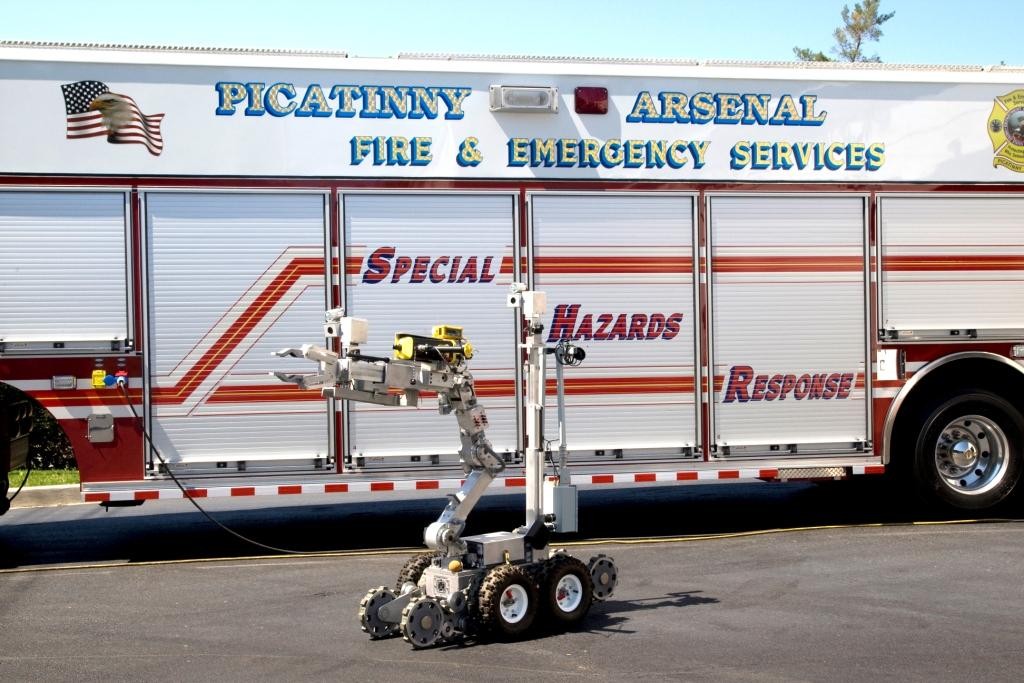PICATINNY ARSENAL, N.J. -- The Picatinny Arsenal Fire Department has obtained a sophisticated, highly specialized vehicle designed to provide command and control during incidents involving hazardous materials as well as other potentially lethal threats.
The vehicle, which is 57-feet with a 42-inch extended cab, is also designed to respond to chemical, biological, radiological, nuclear and explosive (CBRNE) incidents.
"The vehicle is designed for special hazards that may exist on the base," said Picatinny Fire Chief Ronald Guidetti.
"The close proximity to major cities within the Northeast, and air transportable capabilities on military C-17 aircraft at other nearby bases, make the vehicle a perfect fit for Picatinny Arsenal," Guidetti added.
The vehicle will also provide support for hazardous materials incidents in the surrounding communities, counties, state and region.
Earlier this year, the vehicle came to the Picatinny Arsenal Fire and Emergency Services department from Fort Monmouth, N.J., which is scheduled to close in September 2011 under Base Realignment and Closure (BRAC) law.
Eight firefighters have transferred from Fort Monmouth to Picatinny Arsenal over the past four years. Two of the firefighters were on the original working committee for the design of the vehicle from start to the completion. All eight have experience or expertise in all aspects of the vehicle's operation.
"Members of the (Picatinny) fire department have been receiving continuous training on the vehicle since the vehicle arrived," said Chief Guidetti. "Training will be ongoing for the next several months through the winter."
Thus far, the vehicle isassigned to respond on limited responses, including one small hazardous materials incident in Jefferson Township, N.J.
However, as training continues and personnel become proficient on the vehicle and related equipment, the vehicle will subsequently become part of the routine Hazmat/CBRNE response for Picatinny Arsenal Fire and Emergency Services.
The vehicle can use advanced detection, monitoring, communication, screening, sampling, and mitigating equipment to reduce the risk of human fatalities and to protect property.
In addition, the vehicle is designed to be used as a platform for large scale Hazmat/CBRNE incidents and can operated for extended periods at the locations of such incidents.
An integral part of the vehicle package is a Remotec F6A robot used specifically for Hazmat/CBRNE incidents. Similar to robots used by police bomb squads and explosive ordnance disposal technicians, the robot is equipped with chemical and radiological detection equipment mounted on the arm.
A "gripper claw" on the front arm has an attachment to facilitate sampling of unknown substances.
The robot also has a drive camera and two pan/zoom color cameras.
Inside the vehicle, a firefighter can operate the robot using a computer terminal.
The terminal can access all the information on the chemical and radiological detection equipment,plus provide still pictures and real-time video.
Moreover, it can transmit information to computers at other locations.
With its highly specialized capabilities, the vehicle requires specialized maintenance, calibration and certification.
Over time, as new technologies are developed, vehicle enhancements are expected to provide responders with the latest equipment needed to respond to a wide range of scenarios.


Social Sharing